Finding the right pricing for wholesale upholstered beds can be challenging. With years of experience in the industry, I understand how important accurate pricing is to maximize profits and meet market demand.
Wholesale upholstered beds typically cost $60–$110 FOB, with prices varying based on quality, materials, and features like gas-lift storage or custom designs.
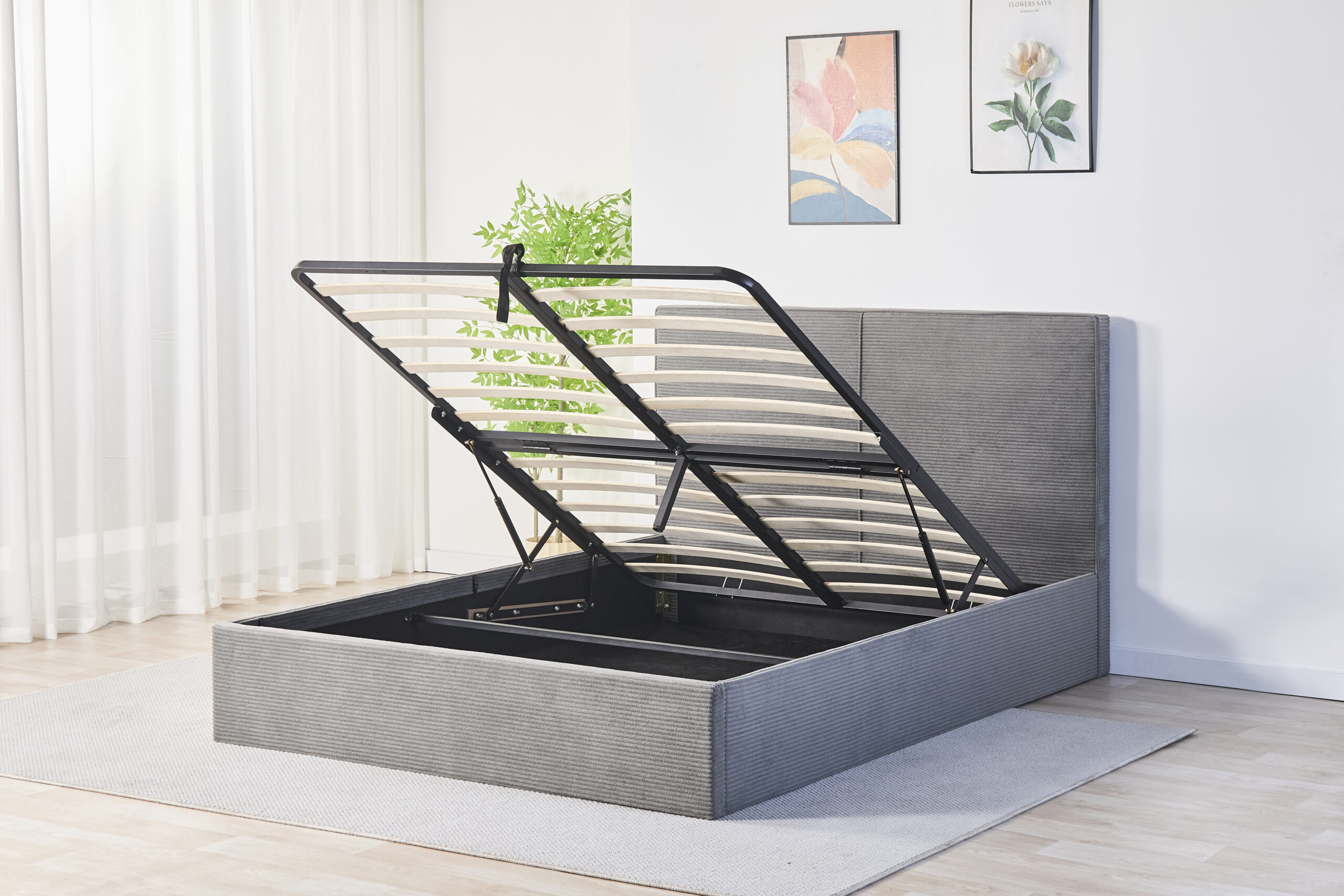
Understanding the factors that influence these prices can help you make informed sourcing decisions. Let me explain what affects these costs and how to optimize your purchases.
What factors influence the cost of upholstered beds?
Pricing for upholstered beds varies based on material, customization, and shipping requirements. This complexity often raises concerns among buyers, especially those new to the industry.
Upholstered bed costs depend on fabric type, frame material, packaging, and features like gas-lift storage. Velvet fabric and reinforced cartons can increase costs by $2–$6 per unit.
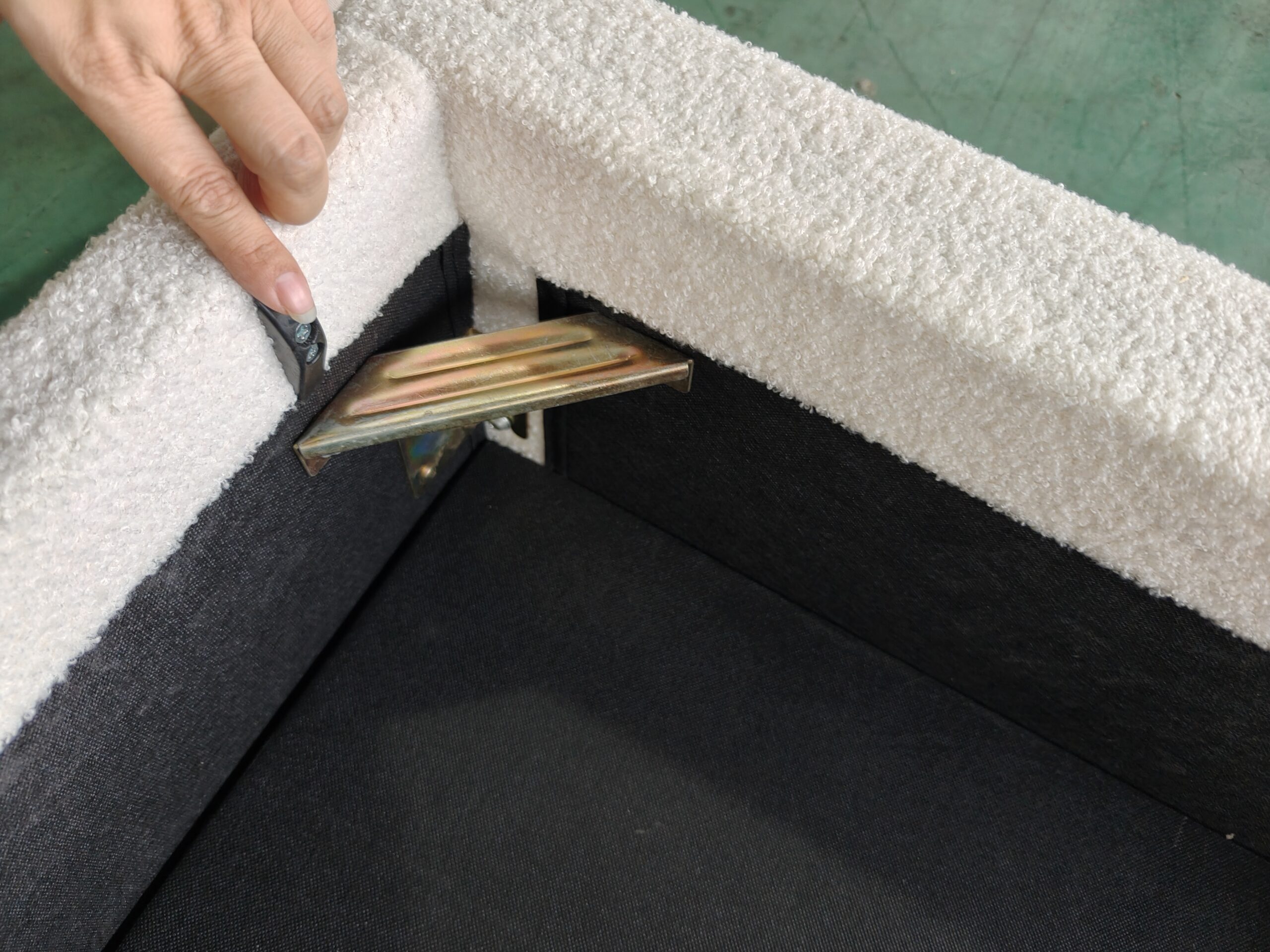
Dive Deeper: Key Factors in Pricing
1. Material Choices
- Fabric Type: Velvet fabric increases costs by $2 per unit compared to polyester or linen. Buyers often prioritize high-quality fabrics for premium markets like the UK.
- Frame Material: Engineered wood and steel are more cost-efficient than solid hardwood. However, hardwood offers a more luxurious appeal for higher price points.
2. Customization Options
- Features: Add-ons like gas-lift storage, tufted headboards, or adjustable frame heights increase unit costs by $5–$10.
- Color and Size: Custom color palettes or tailored dimensions for regional markets may add another $2–$3 per unit.
3. Packaging
- Mail-Order Ready Packaging: Reinforced five-layer cartons are often required for online retailers, adding $4–$6 per unit.
- Accessories: Additional support bars or specialized protective elements cost around $2 per unit.
These factors make it crucial to understand what adds value versus unnecessary expense for your target market.
Where can I find reliable wholesale suppliers for upholstered beds?
Reliable suppliers are essential for consistent quality and on-time delivery. Finding the right partner takes careful research and evaluation.
Find reliable suppliers on platforms like Alibaba or at trade shows like Canton Fair. Look for verified certifications, reviews, and product samples.
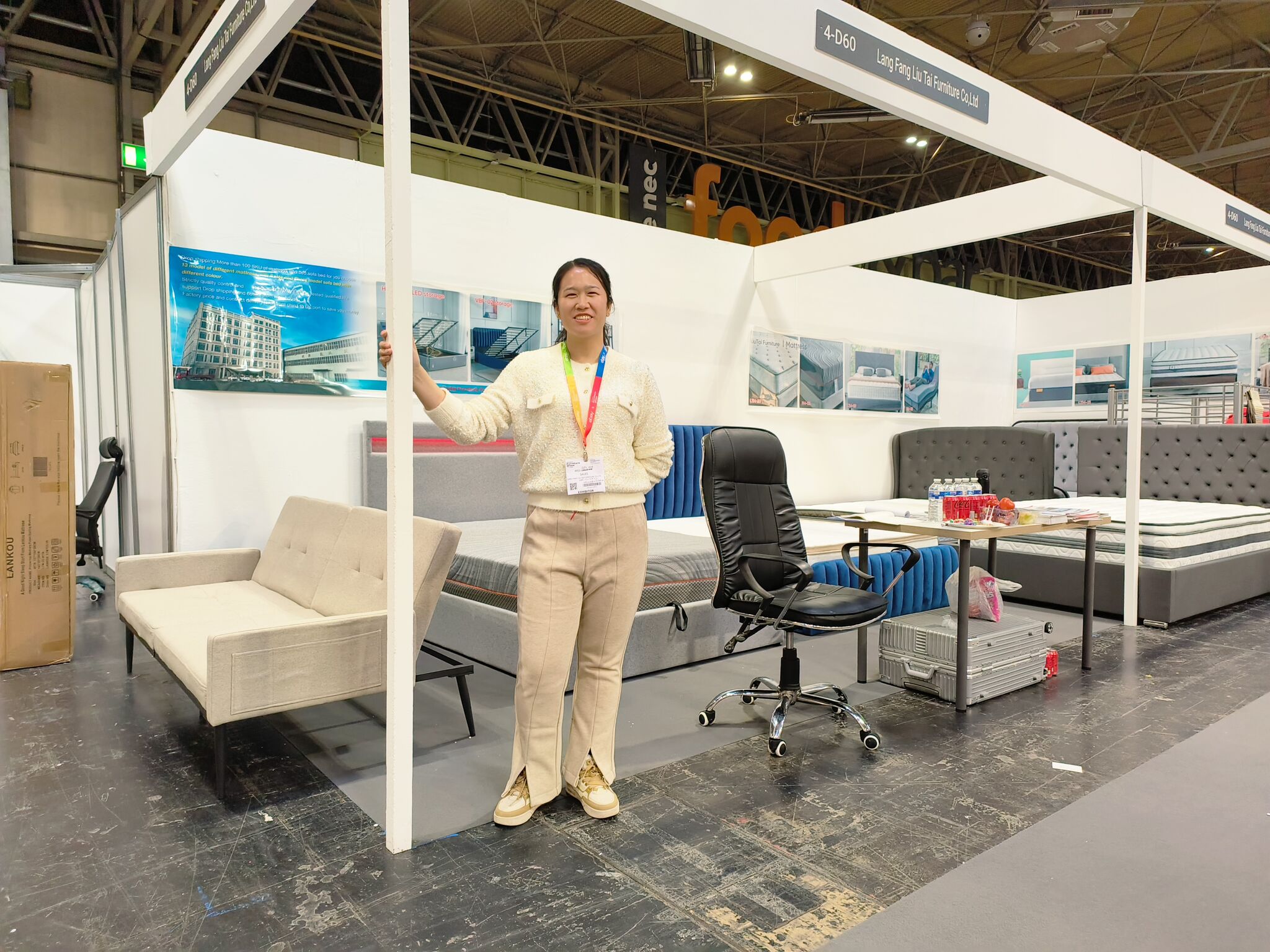
Dive Deeper: Strategies for Finding Reliable Suppliers
1. Online Platforms
- Alibaba: Offers detailed supplier profiles, product catalogs, and buyer reviews.
- Global Sources: Focuses on B2B sourcing with verified manufacturers and a range of upholstered furniture.
2. Trade Shows
- Canton Fair: One of the largest trade events, ideal for inspecting products firsthand and meeting suppliers directly.
- Regional Exhibitions: Smaller, local fairs in Europe or North America can connect buyers with importers who specialize in specific markets.
3. Evaluating Suppliers
- Look for certifications like BSCI or UKFR compliance.
- Request product samples to evaluate fabric and build quality.
- Communicate clearly about MOQ (Minimum Order Quantity) and customization needs.
By focusing on these channels, you can find suppliers who meet your specific requirements.
What are the benefits of purchasing upholstered beds in bulk?
Bulk purchasing is a proven way to lower costs and ensure a steady supply of inventory. For retailers, it simplifies operations and increases profit margins.
Bulk purchasing lowers per-unit costs, ensures stock availability, and secures priority production slots, helping businesses maintain a reliable supply chain and maximize profitability.
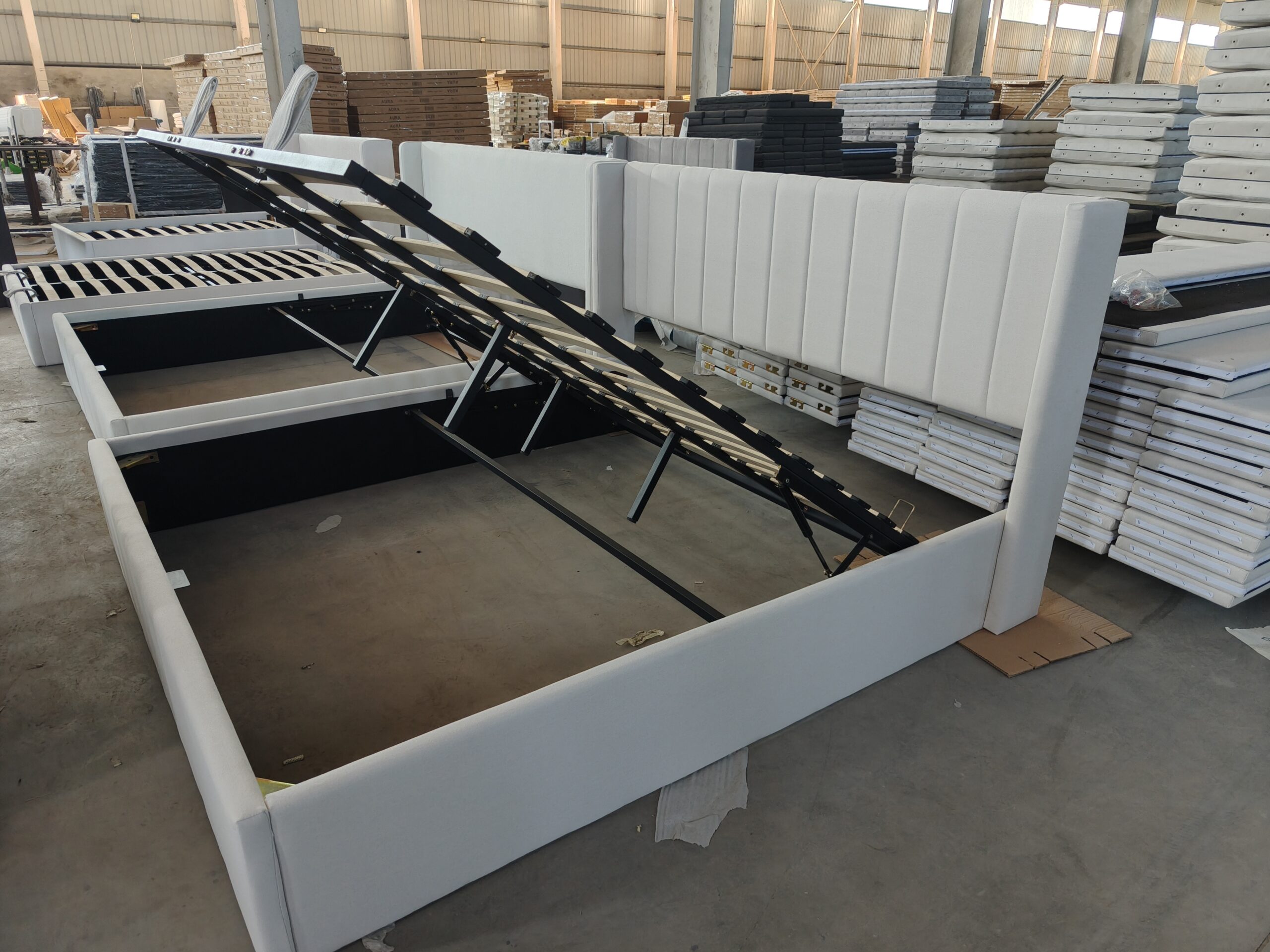
Dive Deeper: Why Bulk Orders Make Sense
1. Cost Savings
- Lower Per-Unit Costs: For example, a single container with 300–350 beds reduces shipping costs to $4,500–$5,000, compared to smaller shipments.
- Discounts: Many suppliers offer price breaks for large orders, saving $10–$15 per unit.
2. Operational Benefits
- Inventory Consistency: Bulk purchasing ensures stock availability, preventing missed sales opportunities.
- Exclusive Perks: Long-term buyers often gain access to priority production slots and custom designs.
3. Simplified Logistics
- Efficient packaging maximizes container capacity, allowing 40HQ containers to hold up to 350 queen-sized beds.
By purchasing in bulk, you can reduce operational stress while maximizing profitability.
How does the quality of materials affect the price of upholstered beds?
The materials used in upholstered beds directly impact their price, durability, and market appeal. Buyers must balance quality and cost to meet customer expectations.
Premium materials like velvet, solid wood frames, and high-density foam increase upholstered bed prices by $2–$10 per unit but enhance durability and customer satisfaction.
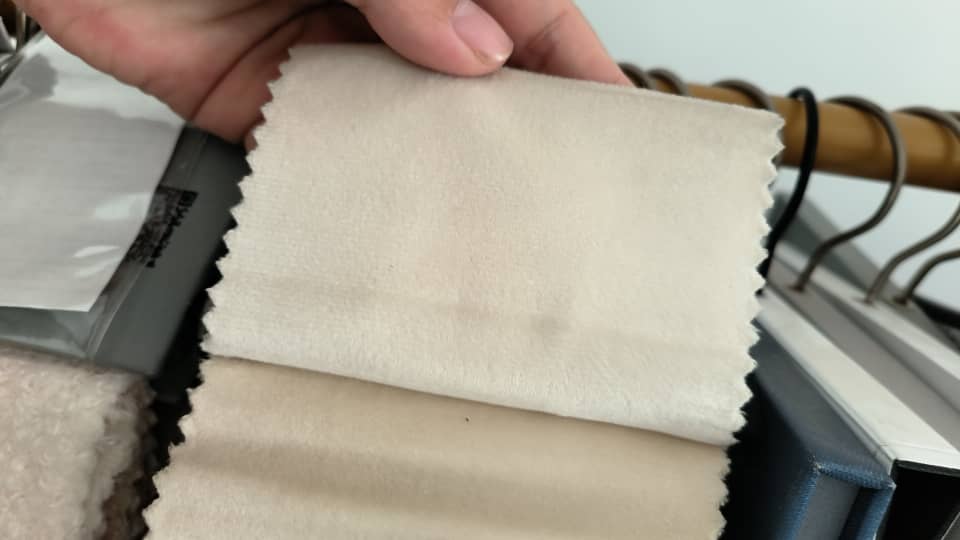
Dive Deeper: Material Impact on Pricing
1. Fabrics
- Velvet and linen are popular for mid-range and premium models. Velvet increases costs by $2–$3 per unit but adds a luxurious touch.
- Polyester is cost-effective but less durable, making it suitable for budget models.
2. Frames
- Engineered wood or metal frames cost less than solid wood, which is typically used for premium designs.
- Reinforced joints or additional support bars add $2–$5 per unit.
3. Foam
- High-Density Foam: Ensures longevity and comfort, costing more than low-density options. Ideal for premium models.
- Standard Foam: Used in budget-friendly designs, suitable for price-sensitive markets.
Material choices can influence not only the price but also the perceived value of your products in competitive markets.
Conclusion
Wholesale upholstered beds typically cost $60–$110 FOB USD, depending on materials, customization, and order volume. By understanding key factors and leveraging bulk purchasing, you can optimize costs while ensuring product quality and compliance.
